-
Posts
420 -
Joined
-
Last visited
Content Type
Profiles
Forums
Resource Library
Events
Gallery
Blogs
Store
Community Map
Posts posted by hexagon789
-
-
1 minute ago, TimO said:
Of course, too busy looking for a lever. Also I thought vac brakes had a ‘string’ to pull but I don’t see one.
Easily done! I've done that many times overlooking something because I've been expecting a particular version and the item in question has a variant/different type.
I know what you mean about the "strings" but I'm not sure everything had "strings" I think there were alternatives. In that respect I'm not sure what to look for though.
-
1 minute ago, TimO said:
This picture of a cattle wagon with vacuum brake clearly has no manual brake lever. Were these vac braked wagons all conversions from hand braked or were some built with vac brakes. Was the manual lever always removed on conversions. Also I notice that the vac brakes meant four brake shoes per side compared to one ( I think) per side on the hand braked wagons. The axle box and springing detail is also very clear in the photo. Your photo of the grain hopper wagon is an ex Northern wagon with N suffix that is different to most of the other types we see. A fabulous amount of detail in this thread.
Isn't that small wheel on the far right-hand bottom of the wagon a brake wheel?
-
 1
1
-
-
7 minutes ago, jhb171achill said:
Sounds about right. I think the UTA / new NIR changed "second" to "standard" about 1967.
I'm wondering if it might actually have been in Des Coakham's book on Irish carriages, because my only 1960s journal doesn't appear to mention the change but I've definitely seen it somewhere because I want to say something like the 4th April 1966 but I'm not at all certain on that date.
-
 1
1
-
-
"A"s are Roots-blower, mechanically supercharged, 071s are turbocharged.
With mechanical supercharging, the speed of the engine directly effects the supercharging, with turbocharging it is the load on the engine instead.
This is taken from the article in IRRS Journal 074
-
 1
1
-
 2
2
-
-
2 hours ago, DiveController said:
Interesting to see this cravens coach, 1504, the coach leader as I recall with the second class numeral on the door. More familiar to most as the MM 1504TL 00 model also on BnT but without any class numbers. When was standard class adopted (when did they lose the door numbers as such)?
Did the first class coaches like 1149 retain a "1" on the doors even after they became 'Superstandards'?
Yes they did. The Cravens Superstandards, MkIId Superstandards and Composites all had a white "I" on the doors.
Second Class became Standard in I think 1966, I did see a date somewhere in the Journals.
-
 1
1
-
-
10 hours ago, jhb171achill said:
Hi Hexagon
These trains were made up largely of laminates of several types built between 1951 (pre-“laminate” construction but similar appearance) to 1959/60. I have a pic somewhere of the inside of one of the studio coaches which was (in this case) an old wooden GSWR coach. I’ll try to find it.
There might have been an odd Bredin among them, but Park Royals would be less likely.
The dining car could be an old GSWR one, or one of the new 2400 series.
A “tin van” or maybe a couple of them typically took up the rear.
A train of this nature would be nice behind one of the forthcoming “A” class.
Motive power would be a specially cleaned up “A” for these. Like steam engines, Crossley “A”s didn’t stay clean too long but these trains (which I very vaguely remember) were pristine.
Naturally, loco and coaches at the time you mention were green.
You mention timetables. If there is any year you’re interested in, PM me and I’ll scan images of it to you.
Thanks for that jhb, very interesting and insightful. I believe that at some point in the 1950s the Cú na Mara at least was a double railcar set (I think two 4-car splitting into Galway and Westport portions, so I wasn't sure if given the issues with 'A' Class reliability that situation was perpetuated into the 1960s.
Thanks for your kind offer re timetables, a year or so ago I found a website with a small collection of 1910s-1930s Bradshaws scans including ones for Ireland in 1938. I forgot to bookmark the site and have been unable to locate it since, I don't suppose you have 1938 at all?
I have a good selection of 1970s-1980s timetables but the other period which interests me is when steam was still king particularly the GSR B1a/800 Class post-war, so anything from when more normal service resumed in the early 1950s would be interesting as well to see what sort of timings services were getting, say 1951? I think things were relatively improved from the coal shortages by then.
I think I mentioned once before reading a dissemination of the 1933 GSR timetable and at first being rather shocked by the journey times and paucity of service but then thinking how damn' lucky we are to have such frequent and fast trains (relatively speaking) on both sides of the Irish Sea nowadays compared to some years in the past.
-
 2
2
-
-
12 hours ago, jhb171achill said:
Recent posts have touched on all sorts of matters related to the much-awaited grey 121s appearing, plus the rest of them; what train consists are realistic, tin vans, livery mixtures, what ran with what, good stock, and the big issue of the sheer variety of what was to be seen on the railway in the 1960-70 period, or - to put it another way - into what environment did grey 121s appear.
This applies, of course, equally to the forthcoming silver, green, black, and black'n'tan "A" class - and for those who have the likes of their Silverfox cousins, B101, "G" and "C" classes.
The first thing - for modellers who have had fewer birthdays (and decades!) than I, is that the entire railway system changed more in the early 1970s than even at the end of steam. Block trains of uniform stock only then appeared and became the norm; a concept totally unknown when the first 121s roared up to Dundalk with a good train (they worked goods before they ever worked passenger!). Sidings and small stations dramatically reduced and eventually vanished. In both goods and passenger trains, barely two vehicles were alike, such was the huge variety of stock.
Unlike today, when each type of train has different couplings, ALL railway vehicles, north, south, east and west, used exactly the same couplings, so the idea of incompatibility between couplings simply didn't exist. At all.
If a modeller had limitless skill, limitless time, limitless budget and limitless imagination, it would still be a hard ask to reproduce this period in all its detail. So I thought I'd fish out a few more pics as well as the ones I posted during the lockdown, but with more of an emphasis on the 1960s - the period when the "grey'n'green" era would morph into the "black'n'tan" era. My earliest railway memories belong to this time, and thus is my preferred period, but the real point is that opinion or not, this was the most varied time in the railway - arguably ever.
Many books are full of photos of the time, and I would recommend detailed perusal of photos in them all - always look what's in the background!
To try to cut through a mass of information for modellers who get the grey or black'n'tan 121s, and who get the pre-"supertrain" liveries on the IRM "A"s, a few simple broad pointers, first - exceptions existed, but this gives the broad gist:
Timeline
1960 "A" and B101 classes dominate most main line goods train, with AEC railcars dominating most passenger trains, though loco-hauled too. Some steam still, mostly on branches like the North Wexford, Ardee, Ballaghaderreen, Ballinrobe, Kenmare, and Loughrea. Almost no regular steam anywhere else, though ballast and (seasonally) beet brings them out of the woodwork. They almost all look extremely run-down. Many six-wheel carriages are still in use - the passenger brakes being mostly GSWR, and the passenger-carrying ones mostly Midland. The vast majority of these six-wheelers are in Cork, and used on Cobh commuter trains at rush hour, and summer Youghal excursions. All goods trains are loose-coupled, and shunting and spare locos are based all over the place, with many steam sheds still being open to cater for them. All wagons are grey, without any exceptions, all passenger stock is green, except for a small few still not repainted from the short-lived "silver" (which is now filthy nondescript grey), and around the former-GNR lines, and the DSER, a few ex-GNR coaches still in either brown or dark blue and cream.
Everything has guard's vans. There is no such thing as air-braking, nor will there be for many years. All goods train are loose-coupled, so must have a goods brake at the end, unless it's maybe a single goods wagon tacked onto the back of a passenger train, as sometimes happened. All passenger trains will have a guard's coach, almost always a six-wheel passenger brake of GSWR parentage, or a modern "tin van".
1961 121s appear. The grey Murphy ones! They will retain this livery for a few years, with repaints to black'n'tan between 1964/5 and about 1968. So, a clean 121 will have green coaches and loose-coupled wagons with guard's van. Other diesels are a mixture of either silver or green.
1962 Towards the end of the year, a decision is taken to bring in the black'n'tan livery, which has been applied to a few coaches.
1963 The 141s start entering traffic, and a major drive appears to take place to repaint carriages in black'n'tan. The last passenger-carrying six-wheelers are withdrawn in Cork in the spring, leaving about six or seven full-brake six wheel coaches in the new livery; the last of these will survive until 1968/9 on the Galway line.
Working steam comes to an end after 129 years. By this stage, steam working has actually become extremely rare, with the few branchlines where it eked out its last days now closed or made goods-only. B101, E, A & C class locos start being painted black'n'tan; after a while, some will be repainted all-black, and after that some - but not all - of the A & C classes will get the yellow patches. The new "Craven" coaches appear; at first, and for a good few years, they will only be seen on main lines. Thus, laminates and Park Royals, plus still a few wooden bogies and Bredins, provide the stock for the majority of trains, and all secondary services.
1964/5 By now, something over half of the passenger stock is in the new livery, the rest green; thus, a grey 121 will need at least SOME green carriages! Many tin vans retain increasingly shoddy "silver", others are green, and others again in BnT. All good remains loose-coupled, and the "palvans" are introduced.
1967 The 181s appear. By now, the very first cement bubbles do too - they run a few at a time in ordinary goods trains, or as a set - but not in braked block trains - thus, a guard's van is necessary with the initial (grey) ones (as it is with beet trains!). Talking of which, open wagons are now about two-thirds "Bullied" corrugated types, with the rest wooden-sided traditional ones, mostly of 1940s Inchicore construction.
1969/70 It's beginning to look more modern now. The 4-wheel "back-to-backs", containers, and the longer-wheelbase four wheel flats are appearing. The re-engining programme is making B201s out of the "C" class, and AxxR out of the "A" class, with the all-black loco livery finally disappearing in favour of everything being variations (high and low waistband) of black'n'tan. The new NIR "Enterprise" heralds the first example of British-outline standard trains of a same type of coach. The bubbles are being repainted orange body and grey chassis, with the newest ones delivered that way, and containers are becoming more common. The die is cast; in only 2 years' time, we'll have the Mk 2s and "supertrains".
The wagons start being repainted brown. By the end of loose-coupled trains in 1976, about two thirds were brown, the rest still grey, with even a tiny few still with flying snails.
BR and Dutch vans start appearing; now, the tin vans start retiring. The last will still be in use on Ballina - Limerick - Rosslare in 1976/7. But for the 1960s they really ARE needed!
Liveries
Apart from details mentioned above, the simplest summary would be:
A, C, B101: Silver new, repaints into green from 1958, with the last few C's entering traffic green.
121: Grey and yellow at start - first to be black'n'tan 1964 or 5; last about 1968/9.
141 / 181: Black'n'tan from new. 1412s have no CIE badge when delivered (the "roundel" has not yet been invented!) but the 181s do, and at that stage they start putting them on the 141s too.
Oddballs: The three E401s / G601s - silver, green, black. Never black'n'tan. The seven G611s - black or black'n'tan always, never green. E421s - black or black'n'tan always. The "K" class - GNR navy, then CIE green, then all black.
Carriages:
Sixwheelers - all green to the end (1963) except for the half dozen full brakes which stayed on during the 60s - they got black'n'tan by 1964.
Wooden carriages - those in traffic got black'n'tan by 1968 or were scrapped.
Bredins, Park Royals, all the many types of laminates, Cravens - all black'n'tan. First ones 1963, last green ones about 1967.
Wagons:
Grey. Nothing brown at all until 1970s, thus long after grey 121s were black'n'tan.
Train Consists
Now, these are TYPICAL: by NO means exhaustive, as readers will appreciate!
Passenger trains
Main line: 121, Crossley "A" or 141, maybe nine carriages plus vans:
Tin van
Laminate
Craven
Laminate
Park Royal
Craven
Craven
Bredin
Laminate
Tin heating van
Mail van extra? Bogie of GSR or early CIE origin.
Secondary or branch line:
Two to five coaches plus tin van. Coaches will be old wooden bogies, laminates, Park Royals occasionally, or laminates of various types. Greater number of still-green stock! Loco - "C", 121 or 141.
Goods:
Mostly "A" class, green or black. Old guard's vans gone by about 1964, with standard CIE 20T and 30T types all over the place. Last GNR ones scrapped, not that CIE ever used them much!
While many modern layouts have the various types of modern bright yellow maintenance train consists, in the 1960s all PW and maintenance stuff was - you guessed it - grey! BUT - sadly - instead of a train of pristine HOBS, I've yet to see modelled that all-too-familiar sight coming out of a junction in the 1960s - a dirty "C" class with the LIFTING train from a closed branch:
The following from a large amount of new material that I am going through, and will need a decent quality scanner and printer for:
(All pics P Dillon Collection)
It is THIS world into which the brand new grey 121 class "yanks" appeared. How very different from the world they left about fifteen years ago.
The very last photo shows a scene so rare, it may be unique. A NEWLY-PAINTED grey J15 in Cork - one of the last few steam engines painted, and which would be scrapped only months later, with a GSWR bogie in quite new black'n'tan. The first black'n'tan stock appeared only a year or so before the last steam engine was withdrawn. In this instance, the steam engine is on shunting duties. See how clean "new" grey paint looked!
Excellent and informative post as ever jhb. My one and only piece of Irish railway memorabilia from the 1960s, is a 1962 timetable.
In it there are a handful of named trains (3 in all), given 1962 is pre-Cravens I wondered what sort of stock both motive power and carriages one should expect to see on the Sláinte, Fáilte and Cú na Mara of this period or were these all railcars?
While I don't model this early, I still find it a fascinating period across Europe - so much change and innovation, arguably more so than any other single decade.
-
 1
1
-
-
13 hours ago, Rob said:
Very interesting read! Unusual in the main pic to have the Restaurant directly behind the loco.
Must have been for the publicity shot as it was never like that in actual service that l saw.
Yes, it is a publicity shot, it also features in the October 1984 IRRS Journal (I think, it might have been June) in the news section, it was a press run from before the coaches entered revenue service formed of EGV+4 Standards+Diner iirc.
Only sets sets were in traffic at this point, and while the author writes that normal formation was to be EGV+Diner+8 Standards, the sets at this point were one eight-piece and one seven-piece both with "Firsts" in the formation.
Indeed as can be seen in the article, the author's carriage was none other than the infamous "1st" 7140!

-
 1
1
-
-
-
1 hour ago, Buz said:
From what I can find so far the Loughrea (spelling) branch closed in 1975 so I would imagine it will more likely be the old style white speed boards given the orignal very light construction of the line.
Upgrade that's why the possible need for the thirty five board some work was done something about rail cars I think?.
It looks I have had my first detail bum steer by the look of it,.
 I really need to find a book or two on Irish railways with some good information in it.
I really need to find a book or two on Irish railways with some good information in it.
While on signage any idea when the brakes board came in and sizes
regards John
Some digging produced the following,
1972 working timetable gives a 30mph linespeed on the branch.
This photo from just before closure shows a 25mph restriction sign in the old style at the exit from Loughrea station.
-
On 9/1/2020 at 9:41 AM, Warbonnet said:
It rings a bell that NIR wanted 141s but had to 'buy British' and ended up with Hunslets instead, but not sure how true that was.
Quite possibly, but would that have solved the power issue on the Enterprise? Given the 1,350hp Hunslets were felt to be rather underpowered for even six-coach loads singly.
(Even accounting for the losses incurred by the HEP/ETH output of a Hunslet a 950hp 141 doesn't quite have the same grunt.)
-
3 hours ago, Buz said:
Hi all
Does any one produce mile pegs and speed restriction signs in the low end MPH
I am going to need some for my proposed Dunsandle layout from 0 to 25 MPH in 5mph jumps and for the express snail possibly 35 MPH "such reckless speed"
I have found a picture showing a yellow plate with black numbers but no dimensions for the signs or color of twhat he back white ??
If I have to make them I figure "N" scale rail post ( I still have some "N" scale rail somewhere) and paper sign hardened with super- glue should do it to produce a resilient sign.
But have no idea how big the sign plate should be in 4mm scale or how high above rail height it should be.
regards John
What era? The older style were white rectangles with black figures, the more modern yellow hexagon with black figures date from about the 1960s and the older style lasted decades really only being replaced if speeds were upgraded/downgraded.
-
13 hours ago, spudfan said:
Story goes that when the 071 class were introduced here British Rail were very impressed with the reliabilty and day to day performance of the class. So much so that they wanted to purchase them for UK operations. Seems politics intervened and they were not allowed to purchase them.
I seem to remember it took some political wrangling for NIR to get its 111s
-
 2
2
-
-
23 minutes ago, RichL said:
BRCW had built the B101 class. In the early 1960s they were building the BR Class 27 and 33. These were generally good machines, apart from long term body rot issues. Sulzer engines too, which would have maintained some degree of continuity. BRCW were really struggling to build the BR orders on time though - and effectively went bust in the process.
An Irish equivalent of the Class 33 might have been a good bet for CIE - a class 47 equivalent would probably have been too big and in any case was developed by a different company, Brush.
I was more thinking in terms of engine power rather than bodyshell in the sense of having a Sulzer loco of over 2,000hp rather than a GM one.
-
1 hour ago, murphaph said:
It's just a pity so much of the network had/has TSRs that mean hardly has a train accelerated to 100 it is braking again for the next restriction. Nowhere on the network has a line speed over 100.
I honestly think the amount of money the 201 shape saved in fuel economy could be counted on one hand but that's a gut feeling and I absolutely stand to be corrected!
Perhaps the intention was there however. Unfortunately Irish Rail made a number of senseless decisions along the way, the needless scrapping of the mkIIIs a few years after buying all those locos being the most obvious.
Still plenty of push pull and loco hauled trains here in Germany, despite the advent of the multiple unit.
Perhaps I'm wrong, but I thought that past Inchicore linespeed had been upgraded to 100mph for 50 miles continously as well as many other lower restrictions past Portlaoise having also been raised, such as the crossing at Emly going from 60 to 80 iirc.
Though it's not done a huge amount for journey times. From 1987 the fastest weekday Dublin-Cork were 2h30 with two stops and linespeed was only 90 as far as Limerick Jcn., it was 75 to Mallow and only 65 beyond Mallow then.
I believe the timing is mostly 2h30 with 4 stops now but that's with 100mph maximum and higher speeds permitted throughout the route now, so it's not really impressive.
The morning ex-Cork non-stop is 2h45, but in 1999 the Sundays non-stop were 2h17 in the up and 2h18 in the down and there were only 3 short 100mph sections then, the longest 13.5 miles.
14 minutes ago, RichL said:Another question would be why didn't CIE continue development of the tried and trusted B101 class, which performed pretty well and was built by one of the better British diesel manufacturers. Even 1100/1101 could have been a basis for development (apart from their brakes).
I've often wondered that myself; then CIÉ might have ended up with something more akin to a Class 47 instead of the 071s.
-
28 minutes ago, murphaph said:
I wouldn't think it plays a significant role at the fairly sedate pace most Irish trains run at but maybe it was more a cosmetic decision.
59s are 60 or 75mph; 201s have a design speed of 165km/h (102.5mph). You'd be surprised how much difference aerodynamics make once you go above 70/80mph as Nigel Gresley was able to demonstrate with his design for the LNER A4 Pacifics in the 1930s. I believe that at over 80mph the saving was about 8.6lbs coal per mile.
-
 1
1
-
-
34 minutes ago, murphaph said:
Yeah ok but the 66, has a similar engine to the 201 got a body style very similar to the 59. That was really my point, if made in an unclear manner. I always wondered why the 201 received the different front rather than just using what they already had.
Aerodynamics? The top part of the 201 cab being angled back whereas 59s are somewhat more slab-fronted.
-
-
If anyone is looking for a copy of IRRS Journal 061 (June 1973), there's a copy on eBay going for £3.50 (€3.90).
This is the one which covers the "legendary" April 1973 Supertrain timetable in addition to articles on GSR coaching stock, CIÉ timetables from 1952-1972 and a colour photo insert of the AC stock exterior and interiors as well as the usual news section etc
-
2 hours ago, Buz said:
Good job no trains in the offer then just platform and other station bits bits.
That would drive me to the brink of real insanity, not just what's considered normal levels of madness in railway modellers.
Childish bits with the right work and accessories that's beatable as long as it works size wise which it sounds like it might be, think I will take the bait on this one
If its a fail all-way's the junk box for later projects.
While we are on toy station bits are the 60's Triang modernization buildings and Hornby Dublo plastic art-deco station bits any use in an Irish setting I have some from my childhood and would at some point like to be able to use them if I can.
The Triang ones don't look to bad with a paint job and glazing fitted. but its the three foot rule instead of the two foot rule

All the pictures of Irish stations I have seen, seem to have a more rustic stone rural and definitely Irish feel to them.
I would think there should be some modern boring brick or concrete box monstrosities there somewhere.
regards John
It was more scale than look with the platform, but the trains would definitely be totally out of place!
-
2 hours ago, Noel said:
Yes typically EVs will manage upto 150,000km before their brake pads need replacing. I had a tour of Dart system in 1984 and one of the things the engineer made a big thing about was the regen braking as well as each coach weighing itself so that max speeds and braking distances automatically calculated in real time. I remember being pretty impressed with the German technology employed.
I wasn't sure if the 8100s were rheo only or regen & rheo.
Load weighting is actually quite simple with air suspension, Mk3 coaches have a mechanical linkage which tops up the brake cylinders automatically up to 50% over the normal pressure for the carriage being unladen and I imagine the 8100s have a similar system rather than an electronic one being of the same era.
-
1 hour ago, Noel said:
Ah so like regen braking in EVs? Pity the derelict out of service 201s at inchicore could not get reengined with hybrid systems, then the regen could go back into the battery rather than resistors, reduce the amount of diesel pollution and especially filthy NoX that locos emit.
Very similar, just with rheostatic the braking energy is wasted as heat but with regenerative some of it is turned back into electrical energy which can be used by other trains. Recovery is about 25%, so you can make some decent savings on energy as well as brake pad or shoe wear.
I believe some of the DART electric units are set-up for regen?
-
 1
1
-
-
23 minutes ago, murphaph said:
The MM ESU file for the 201 has a fan function (I think F5). Is that the resistor bank cooling fan noise?
That I'm not sure about, is there a list of functions and does that state precisely what it is meant to simulate?
-
5 minutes ago, murphaph said:
Great stuff so I don't need to consider any of the dynamic brakes sounds stuff at all.
Correct, no need for the cooling fan noises.
-
 1
1
-
.png.c363cdf5c3fb7955cd92a55eb6dbbae0.png)

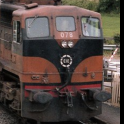


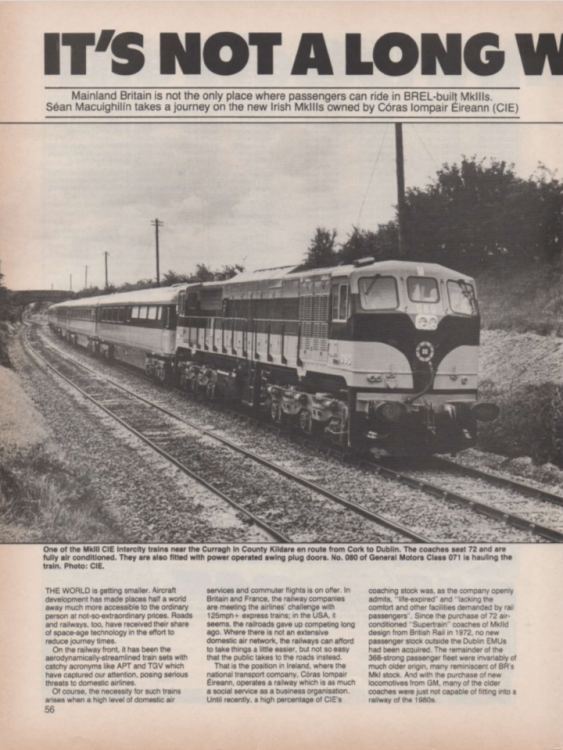
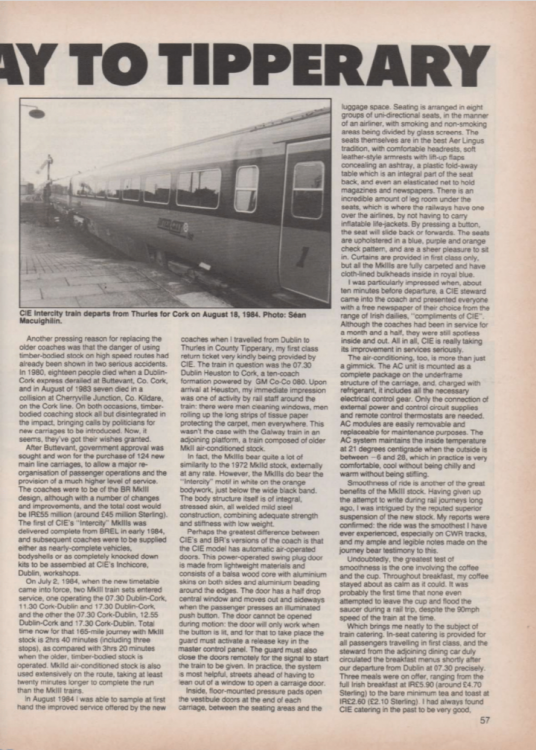
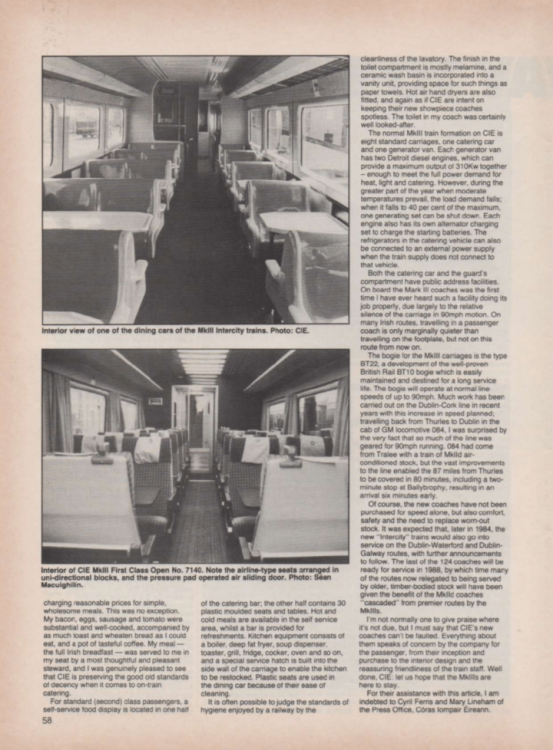
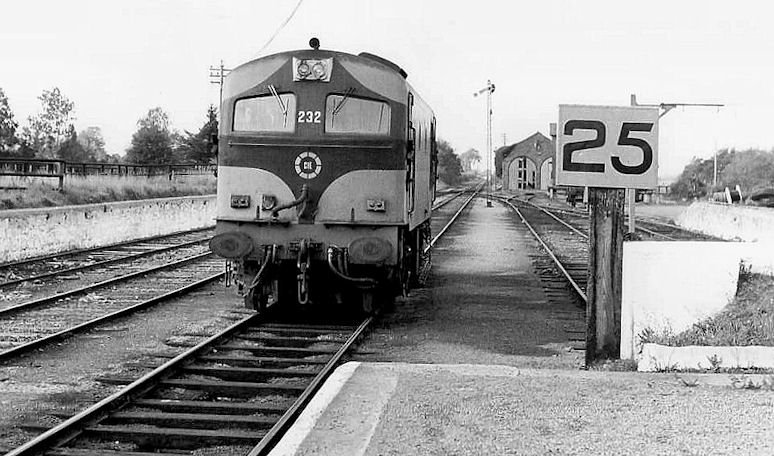
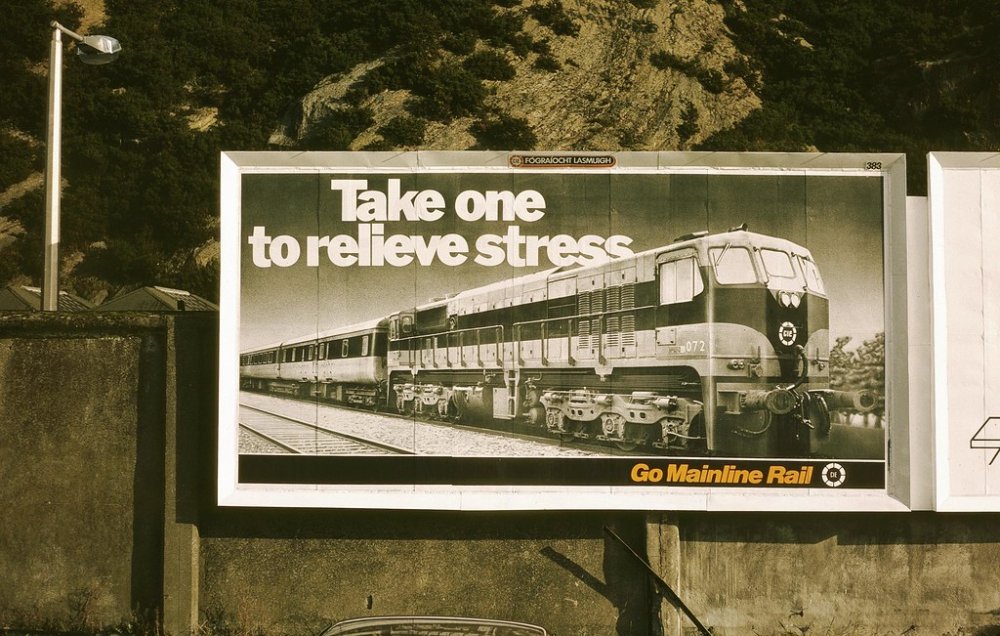
The 1960s
in General Chat
Posted
Now you've posted the correct date, I've no idea where I got my 1966 date from!
Interesting month to choose September, given most major changes generally happen with new timetables which are typically April/May/June.
Or in the case of First Class being rebranded Superstandard then new rolling stock.